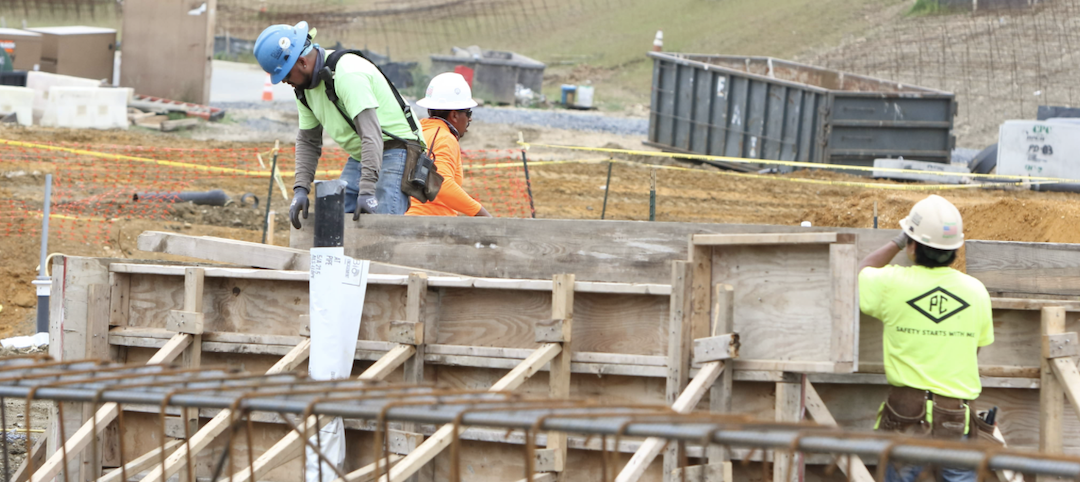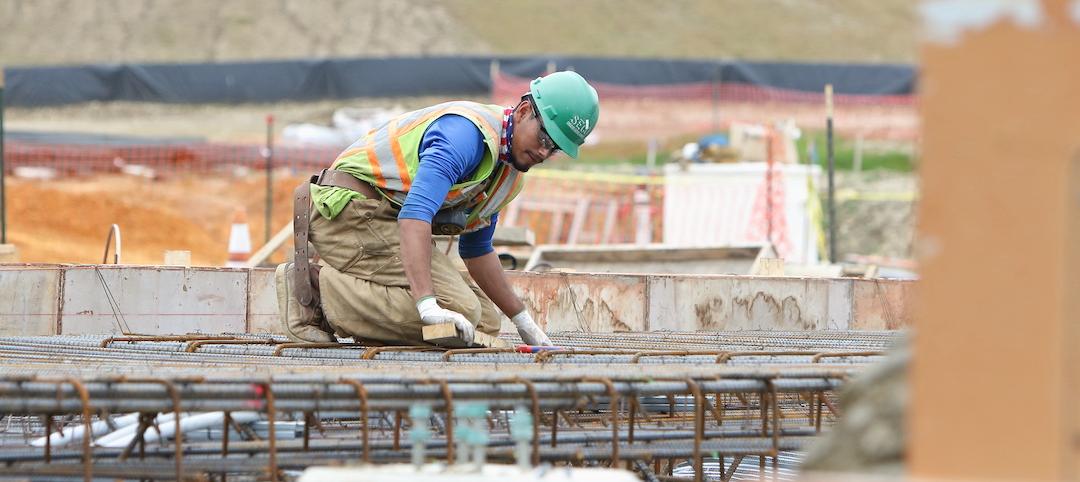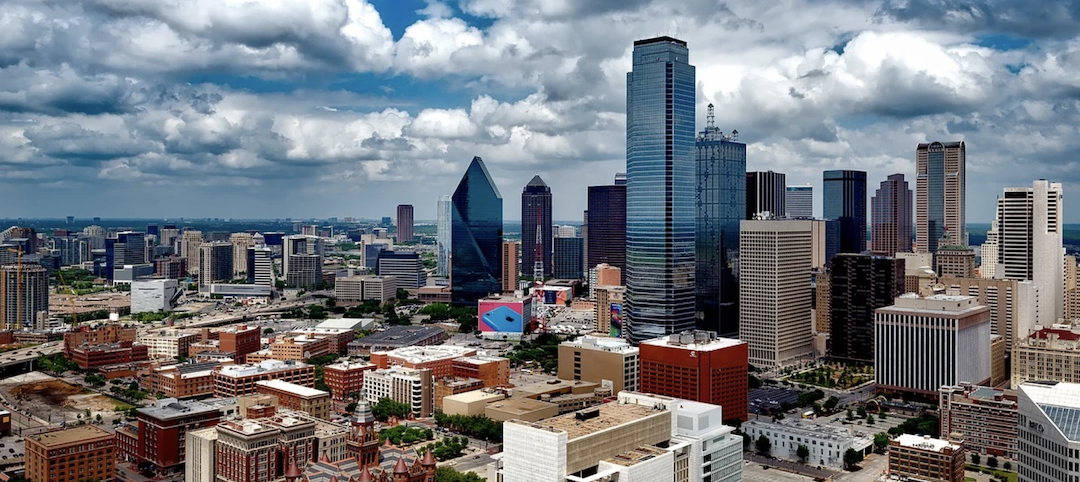The Q3 2018 USG Corporation + U.S. Chamber of Commerce Commercial Construction Index (Index) released today indicates skilled labor shortages will have the greatest impact on commercial construction businesses over the next three years. The report revealed 88% of contractors expect to feel at least a moderate impact from the workforce shortages in the next three years with over half (57%) expecting the impact to be high/very high.
The skilled labor shortage has been consistently identified as a major issue facing the industry, but it is now reported by 80% of contractors to be impacting worker and jobsite safety. In fact, the Q3 report found that a lack of skilled workers was the number one factor impacting increased jobsite safety risks (58%).
"The commercial construction industry is growing but the labor shortage remains unresolved," said Jennifer Scanlon, president and CEO of USG Corporation. "As contractors are forced to do more with less, a renewed emphasis on safety is imperative to the strength and health of the industry. It continues to be important for organizations to build strong and comprehensive safety programs."
As contractors grapple with a scarcity of skilled workers, findings show a majority are working to improve the overall safety culture on the jobsite (63%) and at their firm's offices (58%). However, the indicators that were reported to have the highest impact on improving safety culture and outcomes are those that engage employees throughout the organization. This includes developing training programs for all levels of workers (67%), ensuring accountability across the organization (53%), empowering and involving employees (48%). Other indicators reported include improving communication (46%), demonstrating management's commitment to safety (46%), improving supervisory leadership (43%) and aligning and integrating safety as a value (42%).
In addition to the skilled labor shortage, the report found addiction and substance abuse issues are a factor in worker and jobsite safety. Nearly 40% of contractors are highly concerned over the safety impacts of worker use/addiction to opioids, followed by alcohol (27%) and marijuana (22%). Notably, the report showed that while nearly two-thirds of contractors have strategies in place to reduce the safety risks presented by alcohol (62%) and marijuana (61%), only half have strategies to address their top substance of concern: opioids, which is a newer growing concern. The opioid epidemic cost our economy $95 billion in 2016, and could account for approximately 20% of the observed decline in men's labor force participation.
"The opioid crisis has both human and economic costs," said Neil Bradley, chief policy officer of the U.S. Chamber. "The U.S. Chamber of Commerce remains committed to helping combat the opioid epidemic, which continues to devastate too many families, communities, and industries every day. While there is no one-size-fits-all answer, a multipronged legislative approach is a critical first step."
Overall contractor sentiment saw a slight boost in optimism with an Index score of 75 in the third quarter – up two points from Q2 2018. The Index looks at the results of three leading indicators to gauge confidence in the commercial construction industry - backlog levels, new business opportunities and revenue forecasts – generating a composite index on the scale of 0 to 100 that serves as an indicator of health of the contractor segment on a quarterly basis.
The Q3 2018 results from the three key drivers were:
— Backlog: Optimal backlog rose from 73 to 81, the largest change in any of the three components of the CCI in the last six quarters. The average current backlog was 10.3 months, up from 9.3 last quarter.
— New Business: The level of overall confidence was 74, relatively steady quarter-over-quarter (75 in Q2 2018) but down two points since Q1 (76).
— Revenues: Expectations slipped from 72 to 69, the most notable change coming in a decrease in the percentage of contractors who now expect an increase in revenues, which dropped from 83% to 72%.
The research was developed with Dodge Data & Analytics (DD&A), the leading provider of insights and data for the construction industry, by surveying commercial and institutional contractors.
Related Stories
Market Data | Nov 22, 2021
Only 16 states and D.C. added construction jobs since the pandemic began
Texas, Wyoming have worst job losses since February 2020, while Utah, South Dakota add the most.
Market Data | Nov 10, 2021
Construction input prices see largest monthly increase since June
Construction input prices are 21.1% higher than in October 2020.
Market Data | Nov 9, 2021
Continued increases in construction materials prices starting to drive up price of construction projects
Supply chain and labor woes continue.
Market Data | Nov 5, 2021
Construction firms add 44,000 jobs in October
Gain occurs even as firms struggle with supply chain challenges.
Market Data | Nov 3, 2021
One-fifth of metro areas lost construction jobs between September 2020 and 2021
Beaumont-Port Arthur, Texas and Sacramento--Roseville--Arden-Arcade Calif. top lists of gainers.
Market Data | Nov 2, 2021
Construction spending slumps in September
A drop in residential work projects adds to ongoing downturn in private and public nonresidential.
Hotel Facilities | Oct 28, 2021
Marriott leads with the largest U.S. hotel construction pipeline at Q3 2021 close
In the third quarter alone, Marriott opened 60 new hotels/7,882 rooms accounting for 30% of all new hotel rooms that opened in the U.S.
Hotel Facilities | Oct 28, 2021
At the end of Q3 2021, Dallas tops the U.S. hotel construction pipeline
The top 25 U.S. markets account for 33% of all pipeline projects and 37% of all rooms in the U.S. hotel construction pipeline.
Market Data | Oct 27, 2021
Only 14 states and D.C. added construction jobs since the pandemic began
Supply problems, lack of infrastructure bill undermine recovery.
Market Data | Oct 26, 2021
U.S. construction pipeline experiences highs and lows in the third quarter
Renovation and conversion pipeline activity remains steady at the end of Q3 ‘21, with conversion projects hitting a cyclical peak, and ending the quarter at 752 projects/79,024 rooms.

















